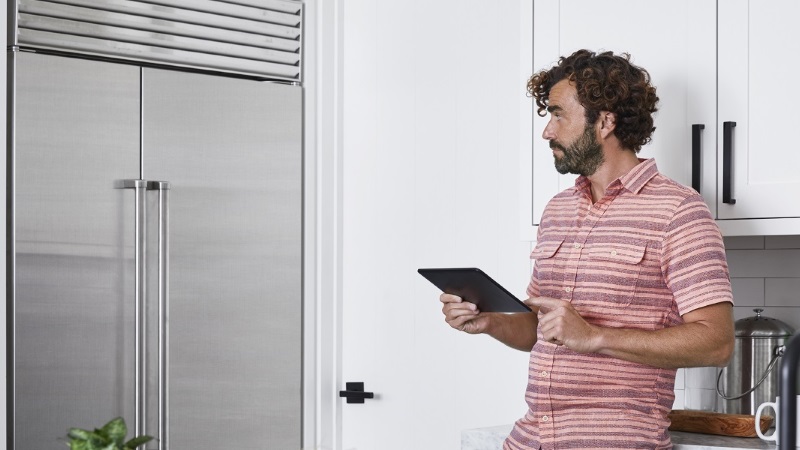How to accept payment from a fridge…

I never thought 15 years ago that I’d be talking about the best way to accept a payment from a domestic appliance. But that’s how I started a talk I did at a recent event. It goes to show just how much things have changed in the world of payments. And how they’re going to keep evolving.
Ok, not many of us are shopping via a voice-activated smart home just yet. But what we do expect is to buy what we want when, where and how we want. And for it to be both easy and fast.
It’s a fact merchants can’t ignore. To thrive they need to offer smooth payments. Let’s take an example. Say you’re a retail group with multiple sub-brands. What if you could instantly recognize customers, whichever of your businesses they interact with? And because of that, you could allow them to pay with a tap of a button or card, or a scan of a fingerprint? Potentially, you’re going to get more payments and more loyal consumers.
It’s All About the Token
So how does the retail group make this possible? Through tokenization. This is when you turn sensitive data into a code that you can safely use across the internet or wireless networks. It sits in place of the original details, which can remain locked away. There’s a clear security reason for tokens. But people soon latched on to them as a way to speed payments. There’s no need to keep re-entering details, so it makes the customer experience much better.
This dual purpose has made tokens critical to ecommerce today. Let’s put it in perspective with a stat. Amazon Prime is tokenizing consumer card data today. And of the US households with internet, just under half have an Amazon Prime subscription.1 That’s a lot of people benefiting from an effective tokenization strategy.
The Key to Future Payments
So, tokens are already a key part of payments. But the IoT will make them even more important. In the future, we’ll live with billions of connected devices. And we’ll be able to use them to pay or accept payments. But to make this a seamless experience, we’ll need to call instantly on saved data and process it securely.
Tokens will be integral to these payments, whether someone’s restocking their smart fridge, calling out a shopping list in their car, or accepting an offer to buy a product they see in their VR headset.
Smart Devices Demand Smart Tokenization
As the IoT explodes, Visa expects to see a ten-fold increase in its network, leading to 30 billion ways to pay and 400 million ways to be paid.2 That’s a lot of tokens to manage. So, it won’t just be about using tokens but managing them well.
The best token management services will standardize token formats and payment types. This will help you adopt any new channels that emerge. And it will make it far easier to analyze data and the behavior of individual customers. Smart token managers will also store information in highly secure data centers.
For a merchant, this kind of approach makes two exciting things happen.
- First, you keep the currency of trust. Trust is at the heart of payments based on stored data. So, data loss is devastating. Loyalty that may have taken years to build can disappear in seconds. Tokens can help you earn and protect hard-won trust.
- Second, you make transactions invisible. The best service is the service you don’t even notice. It’s effortless―so nothing detracts from the experience. Tokenization can make this possible across channels, brands, and payment methods.
Tokens have a major role to play in the best customer experiences. If you’d like to learn more about what your business could do with them, take a look here.
1 - Statista, July 2017. Available at: https://www.statista.com/statistics/504708/amazon-prime-subscription-households-usa-share/
2 - Visa, Operating certificates and Visa Networks, CY2016